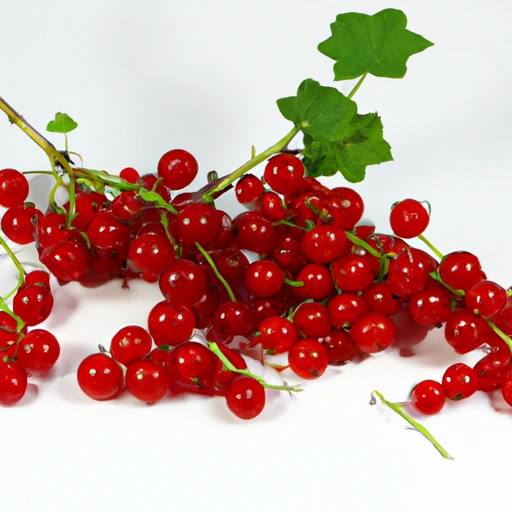Red Currant
Description

Red currants are small, round fruits that grow in grape-like clusters on deciduous shrubs. With a vibrant red hue and a tangy, tart flavor, they are a popular ingredient in a variety of dishes. The berries are often used in their fresh form but are also commonly found dried, frozen, or as preserves. Red currants are not only praised for their distinct taste but also for their versatility in recipes and numerous health benefits.
Common uses
Red currants are often used to make jellies, jams, and syrups, which serve as condiments or glazes for meats, and they are also a delightful addition to desserts, pastries, and fruit salads. Beyond these traditional uses, red currants can also be found in savory sauces, chutneys, and as a garnish to add a pop of color and flavor to various dishes.
Nutritional value
Calories
Red currants are low in calories, with approximately 56 calories per 100 grams (3.5 oz).
Protein
They contain about 1.4 grams of protein per 100 grams (3.5 oz).
Fat
These berries are virtually fat-free with only 0.2 grams of fat per 100 grams (3.5 oz).
Carbohydrates
Red currants have about 13.8 grams of carbohydrates per 100 grams (3.5 oz), primarily from natural sugars and dietary fiber.
Vitamins
They are a good source of vitamin C, providing about 41 milligrams per 100 grams (3.5 oz), which is 68% of the recommended daily intake.
Minerals
Red currants also contain potassium, with around 275 milligrams per 100 grams (3.5 oz), as well as smaller amounts of calcium and magnesium.
Health benefits
Rich in vitamins, particularly vitamin C, red currants help support the immune system and skin health. The fiber content aids in digestion and may help regulate blood sugar levels. Their antioxidant properties are linked to reducing inflammation and preventing oxidative stress.
Potential risks
While red currants are generally safe for consumption, some individuals may have an allergy to berries. Overconsumption may lead to gastrointestinal discomfort due to the high fiber content. As with any fruit, moderation is key.
Common recipes
Red currant jelly, tartlets, and summer puddings are some of the classic recipes that feature red currants. They are also used in sauces for meats such as lamb and game.
Cooking methods
The berries can be used raw or cooked. Cooking helps to reduce their tartness and concentrate their flavor. Red currants can be simmered into reductions or baked into desserts.
Pairing with other ingredients
Red currants pair well with other berries, citrus fruits, apples, and stone fruits. They complement the flavors of almonds, vanilla, and mint. In savory dishes, they can be matched with rich meats and soft cheeses.
Summary
Red currants are a delightful, tart fruit with a rich history and diverse culinary applications. From their use in sweet desserts to savory glazes, these berries offer a unique taste and a host of nutritional benefits. Whether incorporated into traditional recipes or innovative dishes, red currants provide a burst of flavor and color that can enhance a wide range of meals.